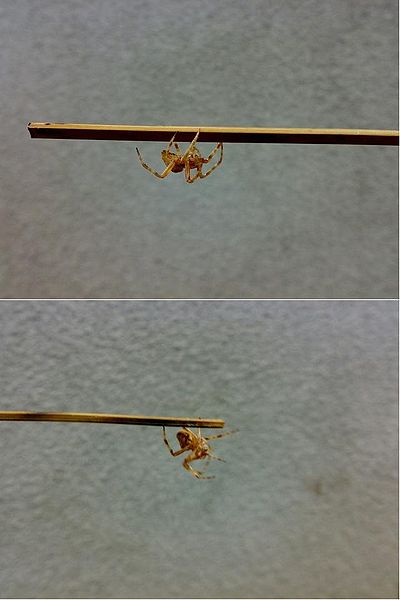
-
МјРЇСІИёСЖШИМі
-
 MINUTE TO WIN IT
MINUTE TO WIN IT 46,759
46,759 -
 Apple Eating Contest Game
Apple Eating Contest Game 34,211
34,211 -
 SINGING BEE
SINGING BEE 23,704
23,704 -
 DEAL OR NO DEAL23,324
DEAL OR NO DEAL23,324 -
 rodeo masbatenio19,401
rodeo masbatenio19,401 -
 Luksong Lubid14,251
Luksong Lubid14,251 -
 EGG AND SPOON RACE12,216
EGG AND SPOON RACE12,216 -
 Tumbang Preso12,151
Tumbang Preso12,151 -
 HULA HOOP12,137
HULA HOOP12,137 -
 BUNONG BRASO ( ARM WRESTLING)12,082
BUNONG BRASO ( ARM WRESTLING)12,082
SPIDER FIGHTING
The sport of spider fighting occurs in different forms in several
areas of the world. Among them are the Philippines, Japan,
and Singapore. The fights that occur in the Philippines and in
Japan are staged between females of various species of
web weavers. Female spiders will kill a rival if the loser does
not quickly flee or receive the aid of a human handler. The
contests that are staged in Singapore are fights between male
jumping spiders. The males fight only for dominance, and
ordinarily the loser will flee, though sometimes they will lose
a leg in the fight
In the Philippines, spider fighting (Hiligaynon: pahibag
sang damang; Cebuano: paaway kaka or sabong sa kaka)
is staged between female orb-weavers from the genus
Araneus. In Japan, the contests occur at an annual festival
and use females of the genus Argiope. In Japanese these
contests are called Kumo Gassen (spider battles).
In Singapore, they use males of the genus Thiania, and
most commonly use the species Thiania bhamoensis,
although another species of that genus may sometimes
be used. Like cock fighting, spider fighting is a sport that
usually involves betting and events occur frequently.
Catching and Care
The spiders are usually caught in trees and bushes
in the early morning or during dusk when the spiders
come out to spin webs. Some spiders are even caught
along power lines. These are believed to be more
aggressive and much tougher fighters since spiders
that live in areas exposed to predators fight better
than those that live in more protected areas.
Spiders suitable for spider fighting are orb-weavers from the genus Araneus.
Only the spiders coming from this genus are called damang or kaka.
They are carefully chosen since catching the wrong spider can result in
being bitten and envenomated. Spiders which do not resemble the typical
Araneus morphology are avoided. Spiders having shiny or waxy abdomens,
spiders with green or loud coloration, and iridescent spiders are also
regarded as dangerous and are not caught.
Spiders with slender bodies and long legs are also favored as better fighters.
Slim, black spiders from guava or tamarind trees are also prized as fighters.
Fighting
Most spider fights are done with a single piece of dried
coconut leaf midrib (usually taken from a broom made
from such midribs; Cebuano: "Silhig tukog", Tagalog:
"Walis tingting") or bamboo. Spiders are placed at both ends
and encouraged to move toward each other and fight.
The sticks are thin enough to ensure that the spiders have
no choice but to meet. It is held by one child who ensures
that the spiders do not escape by alternately switching grip
from one end to the other. How a fight ends is agreed upon
beforehand. Fights to the death will end with one spider being bitten, paralyzed, and swiftly wrapped in silk.
Non-lethal matches end when one spider falls from
the stick (once or several times, depending on the
agreement). Occasionally, the child holding the
stick may need to quickly intervene in a non-lethal
fight to prevent the winning spider from eating the
losing spider. In Cudangdang village in EB Magalona
town, spiders were sold from P20 to P100 per box,
and most buyers come from Bacolod City and Silay City.
In the spider derby, the combatant that falls three
times from a wooden stick loses; one that wraps its
opponent in silk is declared the champion. More
formal fights, called Kaka Derbies are held in an
arena made of two poles connected by a tight string.
Underneath is a padding (usually polystyrene foam)
to ensure that the spiders are not injured in case
they fall down. A fight that includes large sums
of money normally has a "kuyme" (referee) similar to
- ЁЄ
- ЁЄDr.quack quack game (THE HUMAN
- ЁЄSLIPPER GAME
- ЁЄBati-Cobra
- ЁЄMONOPOLY GAME
- ЁЄcoconut shell race/sangkayaw
- ЁЄJack\'n\'Poy
- ЁЄTEN-TWENTY
- ЁЄtomato dance
- ЁЄSerereng
- ЁЄ\"Araw - Lilim\" (Day and Nigh
- ЁЄMAALIS-ALIS/ kaya, kulob (palm
- ЁЄBottle and Straw Game
- ЁЄHabulan ng Baboy (chase and ca
- ЁЄPING TAC TOE



- ЁЄSalapan Festival
- ЁЄEmpanada Festival (Batac City)
- ЁЄPADUL-ONG FESTIVAL
- ЁЄKaumahan Festival in Barili
- ЁЄKAGASANGAN FESTIVAL
- ЁЄLalin Festival in Asturias
- ЁЄTinabuay Festival
- ЁЄGayon Bicol Festival
- ЁЄPINYASAN FESTIVAL in CAMARINES
- ЁЄMAGAYON FESTIVAL
- ЁЄBANAUAN FESTIVAL (BARANGAY.GUA
- ЁЄThe Tuna Festival in Gensan
- ЁЄPINTOS FESTIVAL BOGO CITY, CEB
- ЁЄPanaad sa Negros
- ЁЄPasalamat Festival



- ЁЄ
- ЁЄCEBU WESTOWN LAGOON
- ЁЄGREEN LAGOON, COMPOSTELA
- ЁЄCALLAO CAVE
- ЁЄMOUNT PINATUBO IN PHILIPPINES
- ЁЄBATAN ISLAND in Batanes.
- ЁЄCALAGUAS ISLAND, CAMARINES NOR
- ЁЄAGHO ISLAND
- ЁЄCARAMOAN ISLAND IN CAMARINES S
- ЁЄSAMBAWAN ISLAND
- ЁЄPLACES TO VISIT IN LANAO DEL N
- ЁЄPLACES TO VISIT IN ZAMBOANGA C
- ЁЄPlaces to visit in Rizal Provi
- ЁЄHISTORIC TOWN OF VIGAN CITY, I
- ЁЄCAMBUGAHAY FALLS, SIQUIJOR ISL













 ЧЪРкДхФФ ОпАЃЛѓДу ПРЧТ
ЧЪРкДхФФ ОпАЃЛѓДу ПРЧТ 13ГтПЌМг МвКёРкИИСЗ 1РЇ
13ГтПЌМг МвКёРкИИСЗ 1РЇ

 ГЛАд ИТДТ ОюЧаПј УЃБт
ГЛАд ИТДТ ОюЧаПј УЃБт
 ИЎОѓ ЧаБГ ЙцЙЎБт
ИЎОѓ ЧаБГ ЙцЙЎБт
 СжИЛПЁ ГЛАЁ ОЕ КёПыРК?
СжИЛПЁ ГЛАЁ ОЕ КёПыРК? УжАэАЁМККё РЬКЅЦЎ СёБтБт
УжАэАЁМККё РЬКЅЦЎ СёБтБт
 ЧіСіПЁМЕЕ ЧЪРкДхФФ!
ЧіСіПЁМЕЕ ЧЪРкДхФФ! ЧіСіПЁМ АЁДЩЧб
ЧіСіПЁМ АЁДЩЧб









 ЧЪРк ЦЏБо Ч§ХУ! ФСНУОюСі МКёНК
ЧЪРк ЦЏБо Ч§ХУ! ФСНУОюСі МКёНК







































